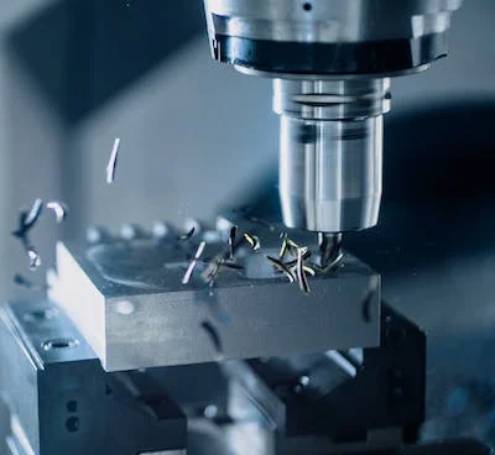What is a Milling Machine?

A milling machine is a versatile tool used in the machining
industry to shape, cut, and drill various materials with precision. It is an
essential piece of equipment in manufacturing and fabrication processes, allowing
for the production of complex parts and components. With the theme ability to
perform a wide range of operations, a milling machine has revolutionized the
field of machining and has become a cornerstone of modern industrial
production.
At its core, a milling machine consists of a stationary
worktable and a rotating cutting tool. The workpiece is securely clamped onto
the worktable, while the cutting tool, known as a milling cutter, is mounted on
a spindle that rotates at high speeds. The spindle can move in multiple
directions, allowing for precise positioning and movement of the cutter in
relation to the workpiece. This ability to control the movement of the cutter
enables a milling machine to perform various operations such as cutting,
drilling, grooving, and threading.
One of the key features of a milling machine is its ability
to remove material from the workpiece. This is achieved by bringing the
rotating cutter into contact with the workpiece, and as the cutter moves, it
removes chips of material, shaping it according to the desired specifications.
The cutting action can be either peripheral, where the cutter's outer edge
removes material, or face, where the cutter's end cuts into the workpiece.
Milling machines come in different types, each designed for
specific applications. The most common types include vertical milling machines,
horizontal milling machines, and universal milling machines. Vertical milling
machines have the spindle mounted vertically, allowing for vertical movement of
the cutter. This type is ideal for tasks such as face milling and drilling
holes in the workpiece. Horizontal milling machines, on the other hand, have
the spindle mounted horizontally, enabling horizontal movement of the cutter.
They are commonly used for tasks like slotting and contouring. Universal
milling machines combine the features of both vertical and horizontal milling
machines, offering greater versatility in operations.
The versatility of milling machines stems from the wide range of milling cutters available. These cutters come in various shapes and sizes, each suited for specific tasks. Common types of milling cutters include end mills, face mills, ball-nose cutters, and slot drills. End mills are used for general milling operations, while face mills are primarily used for facing large flat surfaces. Ball-nose cutters are ideal for machining contoured surfaces and creating intricate details, and slot drills are used to create slots or channels in the workpiece.
Milling machines can be operated manually or using computer
numerical control (CNC) technology. Manual milling machines require the
operator to control the movement of the cutter and workpiece manually. This
method offers greater control and precision but is time-consuming and requires
skilled operators. CNC milling machines, on the other hand, are automated and
controlled by computer programs. The operator inputs the desired specifications
into the CNC system, and the machine carries out the operations automatically,
greatly reducing human error and increasing efficiency.
In addition to their primary function of material removal,
milling machines can also perform other operations such as drilling, tapping,
and reaming. By attaching different tools to the spindle, a milling machine can
be transformed into a multifunctional machining midpoint capable of performing
a wide range of tasks. This versatility makes milling machines indispensable in
industries such as automotive, aerospace, electronics, and mold making.
Milling machines have played a crucial role in the
advancement of manufacturing processes. They have made it possible to produce
complex parts and machineries with high precision and accuracy, leading to
improved product quality and reduced production times. The ability to
mass-produce parts using milling machines has also contributed to cost savings
and economies of scale in industrial production.
In conclusion, a milling machine is a powerful tool used in the machining industry to shape, cut, and drill various materials. Its ability to accomplish a wide range of operations, along with its versatility and precision, has made it an indispensable asset in modern manufacturing. Whether it is used manually or controlled by CNC technology, a milling machine empowers manufacturers to create intricate parts and components that drive progress in various industries.